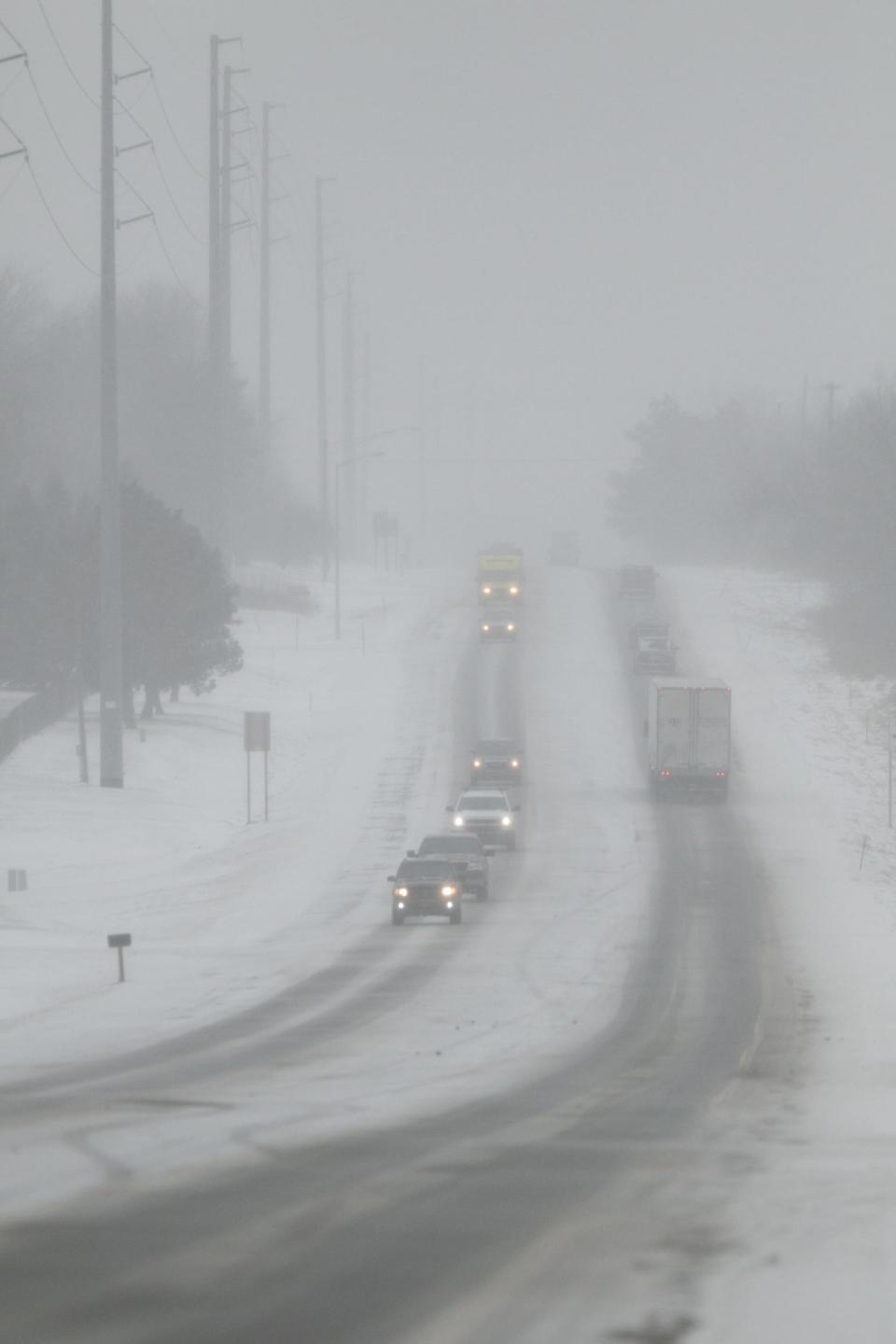Winter weather is back, and so are the drivers who forgot how to drive in snow
It may have looked like winter wonderland outside, but for law enforcement and first responders responding to dozens of crashes, it's anything but wonderful.
"I see it every year. It is the same old stuff, you’ve gotta slow down," Livingston County Sheriff Michael Murphy said.
Deputies with the Livingston County Sheriff's Office responded to over 100 crashes or road run offs due to the snow over the weekend.
Parts of Livingston County saw up to 3 inches of snow between Saturday and Sunday, according to data from the National Weather Service.
Murphy said while there have been a lot of crashes, most have not been serious.

"The good news is when we’ve had the last couple snows ,the roads are bad enough that the speeds are slow enough that the crashes are minor. That’s the good news," he said. "The bad news is there are way too many of them because people forgot from last winter how to drive."
The bottom line is drivers have to slow down, Murphy said.
'I don't care about how big and bad your all-wheel-drive SUV is. It doesn't stop any faster than a two-wheel-drive pickup truck," he said.
Tons of salt
Snow plows and salt trucks have been out in force to handle the slippery roads, Aaron Jenkins, Michigan Department of Transportation spokesperson, said.
"Our drivers are out there laying down salt or other treatments and plowing snow to keep the roads safe," he said.
Jenkins said there are more than 300 MDOT snowplows stationed throughout Michigan taking care of state roads. Local garages are operating at full staff but there is a shortage of extra drivers this year, he said.
"We normally have three extra drivers per garage," Jenkins said. "We don't have those this year."
During a typical snow event, the MDOT garage in Brighton will use about 250 tons of salt for Livingston County. When salt is ineffective, MDOT and contractor crews use calcium chloride, brine, sand, sugar beet, Jenkins said.

Tips for winter driving
Here are some things to address before the weather gets bad.
Ice scraper: If you don’t know where yours is, buy one today. Make sure it's a sturdy one that won’t shatter on a cold day and long enough to reach at least halfway across your windshield. You may use this dozens of times in a season. It’s not a place to scrimp.
Washer fluid: Keep yours full. You go through it faster dealing with ice, snow and slush, and your wipers struggle to clear the elements.
Wipers: Get new ones regularly. Consumer Reports says even the best become noticeably less effective in as little as six months. And protect your wipers. Tip them up off the windshield when parked and you expect precipitation, and never use them to remove accumulated ice or snow. That’s why you have that good scraper.
Tire pressure: Check it. Cold temperatures reduce air pressure as much as 1 psi for every 10 degrees, and it’s easy to forget to check on cold, slushy days. Choose one or two dates each month to check the pressure in all four tires.
Winter tires: If you live somewhere the temperature is regularly below 40 degrees Fahrenheit, (Hello, Michigan!) you’re a candidate. Winter tires have tread patterns that help on ice and snow, but the more important difference is the materials used maintain grip in cold temperatures.
Removing snow and ice: Clean ALL snow and ice off your vehicle, driver-ed prep Zutobi reminds us, not just the windows, but the roof, trunk, bumpers and especially lights. This improves your view of the road, makes it easier for other drivers to spot you, and helps you avoid being the schmuck whose car spews snow, covering the windshield of the vehicle behind you.
Winter to-go bag: Keep one onboard. At a minimum, jumper cables, flashlight, gloves, a hat and warm clothes. You only have to be stranded without them once to regret not preparing.
Lights: Check them. It gets dark earlier in winter, and winter weather conditions reduce visibility. Are all the bulbs working? Headlight lenses can get foggy over time, reducing what you can see and making it harder for other drivers to see you. Autotrader recommends replacement, but says restoration kits also work well. If you don’t have daytime running lights, consider keeping your low beams on all the time.
Detroit Free Press columnist Mark Phelan contributed to this article.
Contact Kayla Daugherty at 517-552-2848 or kdaugherty@gannett.com. Follow her on Twitter @KayDaugherty92.
This article originally appeared on Livingston Daily: Law enforcement, MDOT officials to winter drivers - slow down

